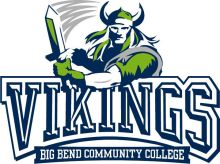Big Bend Community College


Selected Programs at Big Bend Community College
Explore programs at Big Bend Community College. This list is curated by SkillPointe to match skills-based industries and careers that don't require a four-year degree.
Browse Training Programs (45)
Welder
Welding Certificate
The one-year welding certificate of achievement is available for students who do not wish to complete a two-year degree. Local employers indicate that...
View Program
Welding, A.A.S.
The Welding Technology program is designed for persons to acquire the technical knowledge and skills required to obtain a career in welding...
View Program
Certified Nursing Assistant
Medical Assistant
Medical Records and Health Information Technician
Data Security Management
IT Support Specialist
Network and Computer Systems Administrator
Software Developer
Correctional Officer
Criminal Investigator
Police Officer
Preschool Teacher
Early Childhood Education, A.A.S.
Describe how children acquire language and creative expression and develop physically, cognitively and socially (Area I: Child Growth and Development)...
View Program
Early Childhood Education, A.A.S.
Describe how children acquire language and creative expression and develop physically, cognitively and socially (Area I: Child Growth and Development)...
View Program
Teacher Assistant
Early Childhood Education, A.A.S.
Describe how children acquire language and creative expression and develop physically, cognitively and socially (Area I: Child Growth and Development)...
View Program
Aircraft Mechanic
Auto Mechanic
Truck Driver
Address
7662 Chanute St NE
Moses Lake, WA 98837-3299
Moses Lake, WA 98837-3299
Phone number
509-793-2222